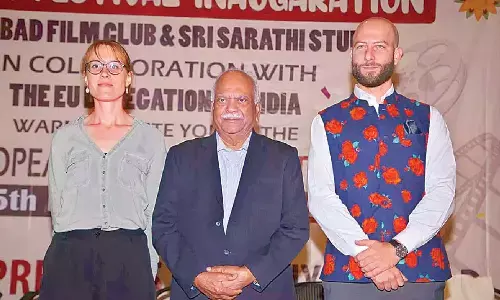Millions uplifted from poverty in India, yet many still struggle

While celebrating the progress, we must acknowledge the limitations of poverty statistics and address the deeper issues that keep many vulnerable
For a long time poverty has been a potent political tool in India, wielded by the rich and powerful among us to maintain their status quo and advance their self-centred agendas if exceptions are set aside. Perpetuating economic disparity and social marginalization should never be encouraged, though political elites will not hesitate in manipulating impoverished populations, exploiting their vulnerabilities for their own electoral gains. This exploitation takes various forms, from distributing patronage to specific groups to garnering electoral support, to suppressing dissent through acts of coercion. Poverty can also be instrumentalized in deflecting blame from ineffective governance. Therefore, addressing poverty in totality is not just a humanitarian imperative but also an important step towards dismantling entrenched power structures and fostering genuine socio-political development in a developing nation.
In the recent decades, to be precise since the liberalization of the economy, India has witnessed a significant decline in the number of people living in absolute conditions of penury. Recently, the NITI Aayog along with the UNDP released a discussion paper on the findings of their Multidimensional Poverty Index (MPI).
It said that MPI in India declined from 29.17 per cent in 2013-14 to 11.28 per cent in 2022-23, with about 24.82 crore people moving out of this bracket in nine years. It also claimed that bigger States like Uttar Pradesh, Bihar and Madhya Pradesh registered the largest decline. Though many experts have questioned the efficacy of these findings, one will certainly admit the fact that there has been a remarkable reduction in the number of poor people over the years including the last ten years. Lately, the findings of the Household Consumption Expenditure Survey (HCES) for 2022-23 have added a new dimension to the debate over the number of poor people in the country. The HCES suggests, as claimed by NITI Aayog CEO BVR Subrahmanyam, which was widely reported in the media, that now less than five per cent of Indians are expected to be below the poverty line and extreme destitution has almost disappeared from the country.
He is of the view that growth is broad-based with rural people’s incomes and spending rising faster than their urban counterparts. Citing the Monthly Per Capita Expenditure (MPCE) averages across fractile classes in 2022-23, Subrahmanyam has also said, as has been reported in media, that Rs 1,373 was the average consumption level for the bottom five per cent of rural households as compared to Rs 1,782 for the next 5 per cent of households.
Now the million-dollar question is: Can we take the reduction in the number of poor people as a sign that now our masses have more surplus income to save and spend more on their children’s education and better upbringing? Do we have data to corroborate that more and more ‘poor people’ are putting their monthly savings in their bank accounts where they are also getting the benefits of various welfare schemes of Central and State governments? Such data will help us reach realistic and more comprehensive inferences. We need to see the gap between people’s enhanced income and expenses on essentials such as food, health, social functions, need based-travels and meeting bare minimum social obligations. That is the challenge we need to accept and address. Let us agree that multiple interventions will be required to break the shackles of ever-lasting yawning income disparities among us.
Do we know the condition in which millions of people including farm, factory and gig workers and those engaged in unorganized sectors work? Do they get benefits of labour laws? Do we have their data? Have we been able to ensure that their salaries and wages are credited strictly into their bank accounts linked to their personal provident fund (PPF) accounts so that the government knows and makes sure that they do not suffer in any respect.
When a large number of workers are just paid salaries and no other benefits including annual paid casual and sick leaves, then what kind of working environment we are creating in our country, aspiring to be a $ 30 trillion economy by 2047. We need to know that there exists only a thin line between those living below the poverty line and the people above the poverty line. Until and unless they fit somewhere in the frame of being well-off, we need to be aggressive in our interventions to support them in more ways than one.
Similarly, we have to ensure that doors of school education in the private and public sector are inclusively open for the children of the families, who have defeated the monster of absolute poverty. Else they will slip back into the morass of agonizing destitution in no time. This hand-holding should be done in a mission mode. If possible, the Centre should enact a law to mandate compulsory enrolment of all children in private or public schools in their vicinity. India will be initiating a monumental step towards the realization of Viksit Bharat if 10+2 education is made mandatory for all. All of a sudden, children of ‘rich poor’ consisting of SCs, STs, OBCs and other communities will be school bound where they would be provided with knowledge, skills and lessons in etiquette, thereby breaking the barriers of high and low syndrome.
Equality in treatment socially, accessing facilities, privileges, national resources and job opportunities will be a true reflection on our collective resolve to combat the menace of mass deprivation in a comprehensive manner. So as long as quality income, opportunities, facilities and privileges are confined to a minuscule percentage of people of the country, the fight against poverty will never reach its logical conclusion.
People not dying of hunger is certainly a great achievement but the majority of them living in a condition devoid of the ease of our country’s economic vibrancy will not be a cause of celebration. However, we can draw a kind of solace from the fact that the poor among us are fighting the menace of penury with resilience in which the support from the Central and State governments is playing a crucial role.


















